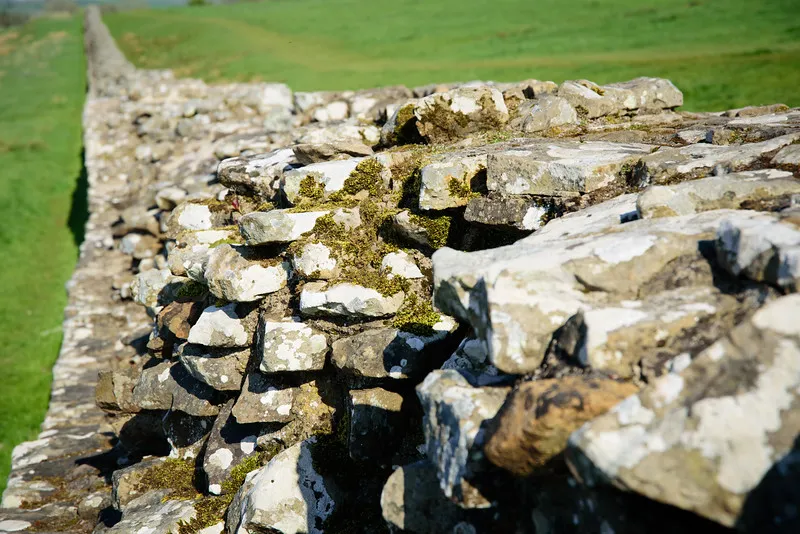About a month ago I posted Share My World: Rome and highlighted Mausoleum of Hadrian in Rome now I am going to share more about our visit to Hadrian's wall in Northern England.



We went to one of the best preserved sections of the wall at Birdoswald Roman Fort close to the River Irthing and Upper Denton, England.
Growing up in America and especially the west coast. It was really great to be able to see something built so long ago.
Hadrian's Wall
Hadrian's Wall was 117.5 km (73.0 mi) long and stretched the width of England. It was begun in 122 AD by the Emperor Hadrian.
It is still unclear exactly why the wall was built.
Theories have been presented by historians, mostly of an expression of Roman power and Hadrian's policy of defence before expansion. On his accession to the throne in 117, there was unrest and rebellion in Roman Britain and from the peoples of various conquered lands across the Empire. Another possible explanation for the wall is the degree of control it would have provided over immigration, smuggling and customs.1
The wall was built of local limestone and took about 6 years to build. Soldiers from all three of the occupying legions participated in the work. 1



Birdoswald Fort
The initial plan called for a ditch and wall with 80 small gated milecastle fortlets, one placed every Roman mile, holding a few dozen troops each, and pairs of evenly-spaced intermediate turrets used for observation and signalling. However, very few milecastles are actually sited at exact Roman mile divisions: they can be up to 180 metres (200 yd) east or west because of landscape features or to improve signalling to the Stanegate forts to the south. 1

About 10 minutes down the road there is another section of the wall, Turnet 49b

With beautiful views of the land around it.


Preservation
This area is pretty well preserved. There are areas of the 73 miles where there is no wall at all.
Much of the wall has now disappeared. Long sections of it were used for roadbuilding in the 18th century, especially by General Wade to build a military road to move troops to crush the Jacobite insurrection. The preservation of much of what remains can be credited to John Clayton. He trained as a lawyer and became town clerk of Newcastle in the 1830s. He became enthusiastic about preserving the wall after a visit to Chesters. To prevent farmers taking stones from the wall, he began buying some of the land on which the wall stood.
Thank you John Clayton.

Hadrian's Wall was declared a World Heritage Site in 1987.

And here is a selfie of me at the wall and me and @jarvie
 |  |
|---|

Mausoleum of Hadrian or Castel Sant'Angelo in Rome, Italy

A little more about Hadrian...
He was born in January 76 AD and died July of 138 AD at the age of 62. He was a "passionate" hunter. It was fun to find out that like myself, he really liked the arts and architecture and gardening. He completed the Pantheon during his reign and his Villa at Tibur contains a garden.2
He was also a poet. This one is accredited to him shortly before his death.
Roving amiable little soul,
Body's companion and guest,
Now descending for parts
Colourless, unbending, and bare
Your usual distractions no more shall be there...2
He was the Roman emperor for 21 years (117 to 138). He was a traveler too and spent most of his reign traveling throughout the empire. He traveled to Britannia (122), Africa (123-124), Greece (124-125), Return to Italy and trip to Africa (126-128), Greece, Asia, Egypt (128-130), Greece (130-132),2

Sources:
